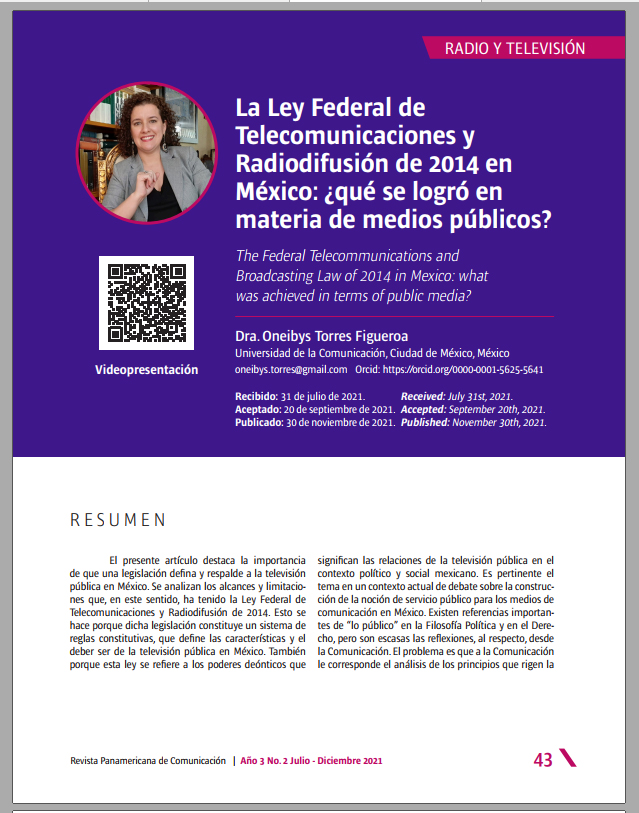The Federal Telecommunications and Broadcasting Law of 2014 in Mexico what was achieved in terms of public media?
Main Article Content
Abstract
This article highlights the importance of legislation defining and supporting public television in Mexico. The scope and limitations of the Federal Telecommunications and Broadcasting Law of 2014 are analyzed in this regard. This is done because said legislation constitutes a system of constitutive rules, which defines the characteristics and the duty of public television in Mexico. Also because this law refers to the deontic powers that public television relationships mean in the Mexican political and social context. The issue is pertinent in a current context of debate on the construction of the notion of public service for the media in Mexico. There are important references to “the public” in Political Philosophy and Law, but there are few reflections on this matter from the Communication. The problem is that Communication corresponds to the analysis of the principles that govern the way of transforming manifestations and experiences into communicable aspects. This has to do with the task of the media to “advertise” in the public sphere and highlights the role of communication in social reality. The purpose of the review that is carried out is to contribute to the reflection on the institutional framework of public television from the communication point of view.
Article Details
References
Becerra, M. & Waisbord, S. (2015). Principios y “buenas prácticas” para los medios públicos en América Latina. Montevideo:UNESCO.
Hallin, D. & Mancini, P. (2004). Comparing Media Systems. Three Models of Media and Politics. Cambridge: Cambridge University Press.
Mastrini, G. & Becerra, M. (2007). Presente y tendencias de la concentración de medios en América Latina. Zer, 22, p. 15-40. Recuperado en: https://ojs.ehu.eus/index.php/Zer/article/view/3666
Ortega, P. (2018). Desafíos de la televisión pública en la era digital y su función en la democracia de calidad. Ponencia presentada en el Segundo Coloquio Reconfguración de los campos culturales y las prácticas simbólicas en la era digital, organizado por el área de Investigación, Educación y Comunicación Alternativa de la Universidad Autónoma Metropolitana-Xochimilco.
_____ (2010). Televisión pública y democracia en América Latina. Anuario de investigación 2009, UAM-X, MÉXICO, p. 31-48. Recuperado en: https://publicaciones.xoc.uam.mx/TablaContenidoLibro.php?id_libro=333
_____ (2006). La otra televisión ¿Por qué no tenemos televisión pública? México: Universidad Autónoma Metropolitana.
Trejo, R. (2010). Muchos medios en pocas manos: concentración televisiva y democracia en América Latina. Intercom – Revista Brasileira de Ciências da Comunicação São Paulo, v.33, n.1, p. 17-51. Recuperado en: https://rtrejo.files.wordpress.com/2011/03/muchos-medios-en-pocas-manos-intercom-vol-33-no-1-2010.pdf
Trejo, R. (Coord.) (1987). Televisa: el quinto poder. México: Claves Latinoamericanas.


